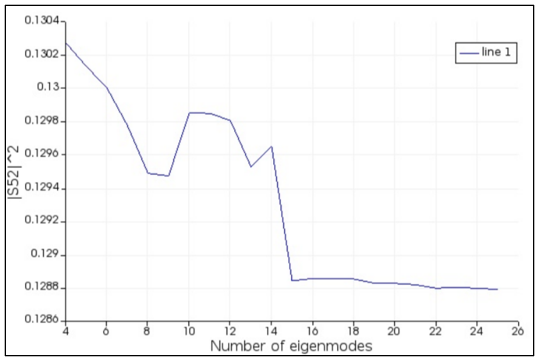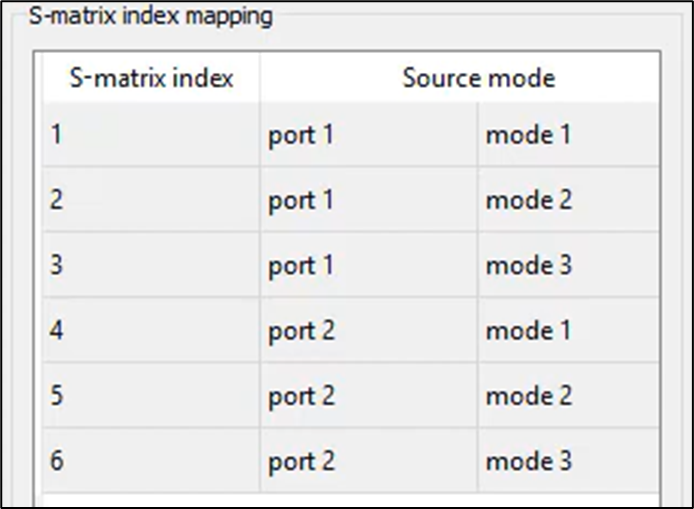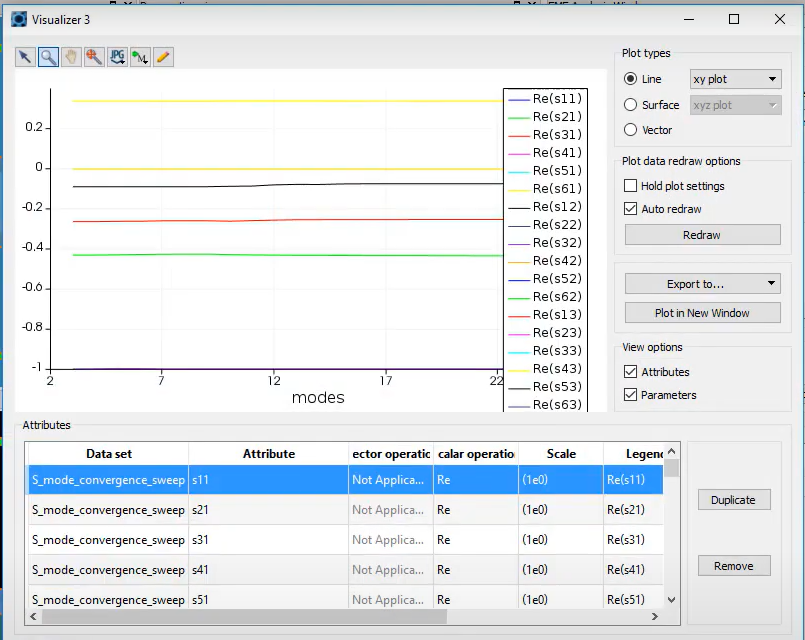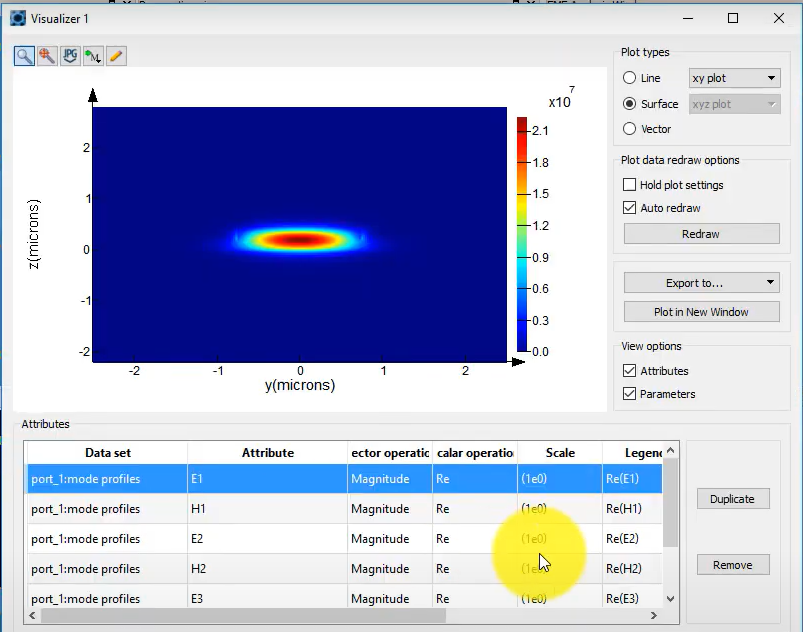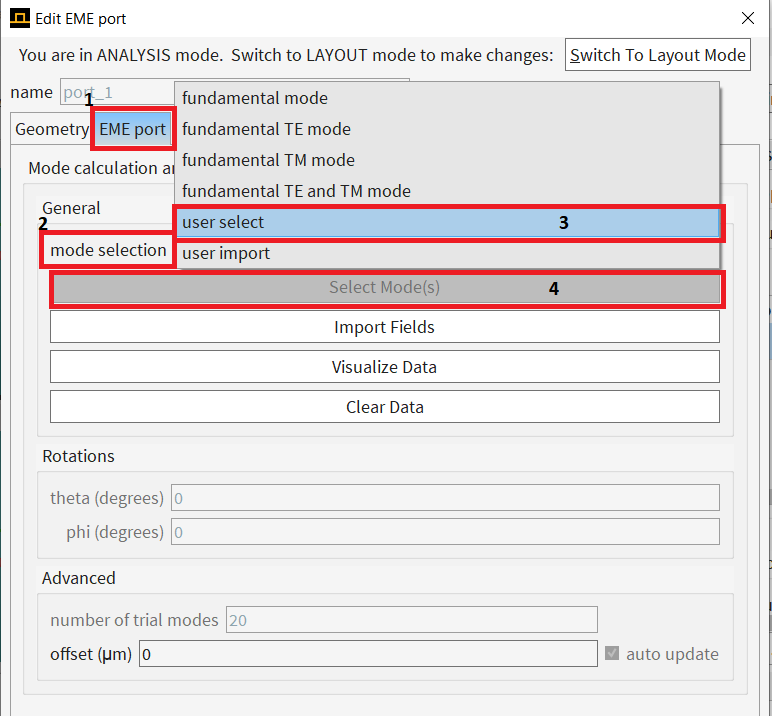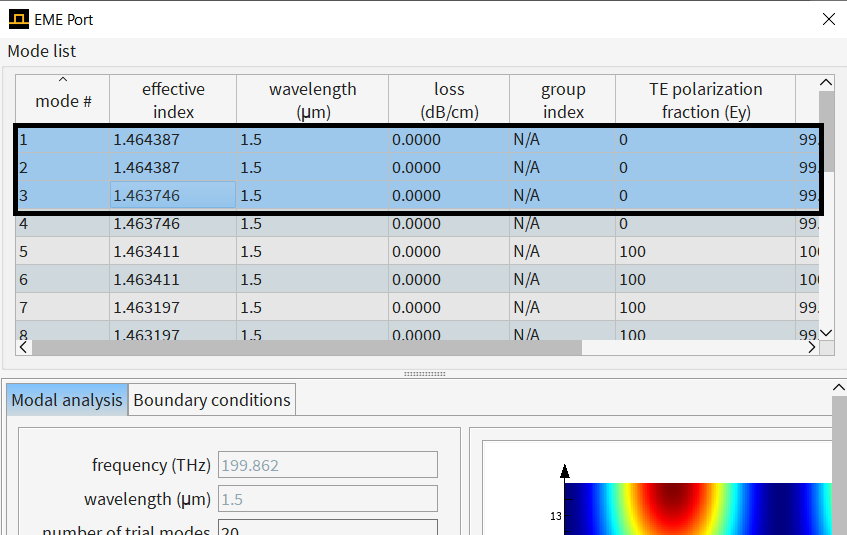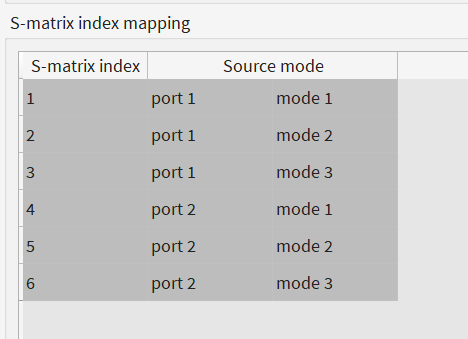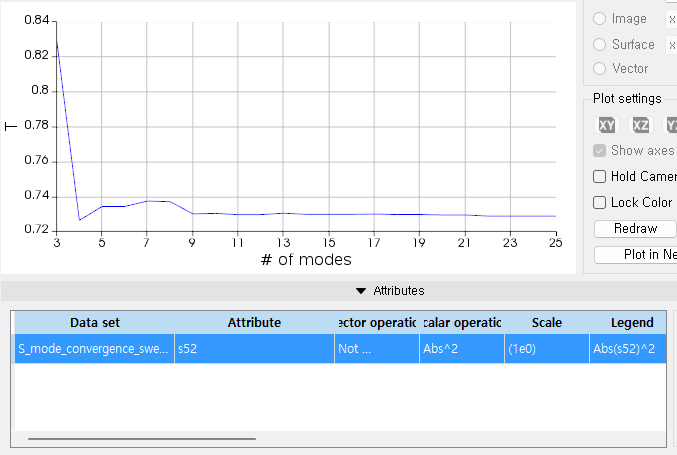-
-
February 7, 2024 at 9:24 am
YOON Seokhyeon
SubscriberHello everyone.
I am studying the EME solver in MODE to use the EME solver for simulations.
I am trying to obtain the following graph using the mode convergence sweep tool as described
in 'Convergence testing process for EME simulations' and 'Convergence testing method':
(https://optics.ansys.com/hc/en-us/articles/360037172994-Convergence-testing-process-for-EME-simulations)
In the course of my study using relevant examples, I learned that to obtain S_52, three modes need to be selected for each port.
However, despite referring to the mode convergence sweep(
), I could not obtain the S-parameter and mode profile as shown in the attached image.To summarize, I'm curious about how to select modes at each port to obtain the S_52 graph based on the number of modes for convergence testing.
I attempted to proceed with the fundamental mode but did not achieve the desired results. Additionally, when executing the 'testing_convergence_EME.lsf' script, an error occurred at line 63 with 'S52 = S.s52;'
Apart from simulation questions, I also have conceptual inquiries. I find it difficult to understand the meaning of 'S_52', which is described as 'the conversion efficiency from the TE1 input mode to the TM0 output mode.' Additionally, I'm curious about the reason for confirming mode 2 from port 1 input to port 2 output, as seen in the 'S-matrix index mapping' image.
I still feel like I'm in the early stages of learning and would appreciate any advice. Please let me know if there are any aspects I'm missing.
Thank you.
If you have any other questions or need further clarification, feel free to ask.
-
February 7, 2024 at 7:41 pm
Amrita Pati
Ansys EmployeeHi Yoon,
That is correct, you would have to choose the relevant modes at the input and the output modes. By default, only the fundamental mode at each port is selected.
Let's say you are looking at the input port ("port_1"). First you have to edit the port, go to "EME port" tab, and choose the mode selection as user select. Then you can click on the "Select Mode" option.
This will run the eigenmode solver to calculate the modes of at the input, you can select multiple modes from here, as an example I have chosen three in the screenshot below:
You will see that after you select the mode, the selected mode numbers will automatically show up here:
You would now have to repeat the same steps for the other port. Now after you run the simulation, you can look at the S-matrix indx mapping in the EME analysis window:
Please let me know if you have any further questions.
Regards,
Amrita -
February 12, 2024 at 6:09 am
YOON Seokhyeon
SubscriberHi Amrita,
Thank you for your detailed reply.
I didn't know there were multiple modes to choose from.
In addition, I have a conceptual question as I said in the above question.
As we proceed with the convergence test, we check S_52. I wonder why we check S_52 and what is means? (S_52 means 'the conversion efficiency from the TE1 input mode to the TM0 output mode.')
If so, is it wrong to check S_41?
Regards,YOON
-
February 12, 2024 at 6:52 am
YOON Seokhyeon
SubscriberHi Amrita,
I have another question.
I'm trying to simulate a similar simulation such as the following conditions.
(Si3N4, 1.31 nm / Let me know if you want to know other conditions.)
As in the above answer, 'mode convergence testing' was conducted, and the results were obtained as shown in the picture below.
In the first question example, 'lS52l^2' converged to a very small value. Is it okay to converge to '0.72' like the picture above?
-
February 12, 2024 at 5:19 pm
Amrita Pati
Ansys EmployeeHi Yoon,
It doesn't have to be S52. Convergence can be performed with regard to any input/output modes. I would recommend you to look at the input and output modes you are interested in. If S is extremely low though it could be hard to say if the results you see are accurate or numerical artifacts. So, I would recommend you to look at the modes where you expect a large proportion of the power to be in. For example, the second case looks reasonable, you can clearly say that the simulation seems to be converging around 0.73.
Regards,
Amrita
-
- The topic ‘EME solver – How can I get an S52’ is closed to new replies.



-
4618
-
1530
-
1386
-
1210
-
1021

© 2025 Copyright ANSYS, Inc. All rights reserved.

